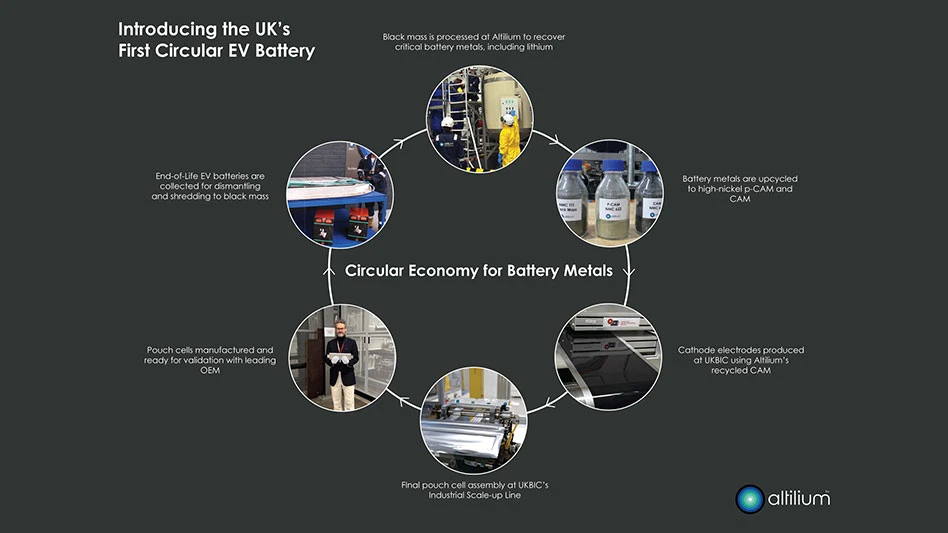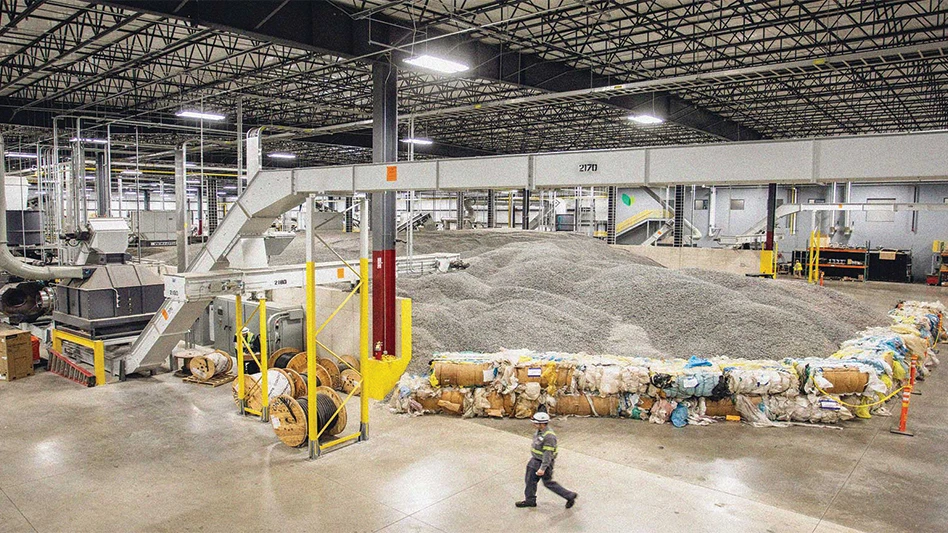
Throughout late 2016 and early 2017, as recovered fiber prices have soared, among those whose profitability has been most put into peril are paper manufacturers in India. The nation’s current and future role as a consumer of recovered fiber was in the spotlight Feb. 6-7 when the 2017 Paper Recycling Conference India convened at the Leela Hotel in Mumbai.
Collectors, sellers and buyers of scrap paper already doing business on the Indian subcontinent (or newly exploring business opportunities there) gathered in Mumbai to network and to hear a series of presentations from recycling and paper industry executives and analysts.
The difficult circumstances of India’s mill sector in early 2017 was part of the discussion, but so was India’s status as a growth market for imported and domestically collected recovered paper.
India’s paper manufacturers largely have selected scrap paper as their feedstock of choice, and its paper industry has been growing throughout this decade and is forecasted to keep growing through 2025 at least. That combination of circumstances provided a more optimistic long-term tone to the conference despite the Indian paper sector’s current woes.
Trending upward
Year on year, India’s population continues to consume more finished paper and its mills more recovered fiber, noted speakers at the opening session of the conference.
“At every step of our lives, people need paper, and, where there is paper, there is a need for scrap paper,” said Devang Vora of Mumbai-based Victory Creations and PaperWorks Trading LLP.
Vora said the previous 12 months had brought with it threats to the global trading climate in the form of the Brexit vote, the election of Donald Trump and the bankruptcy of a major shipping line.
India, however, “is the fastest-growing paper market globally; therefore, scrap paper will be in demand,” he said.
Vora referred to India as the largest English-speaking nation in the world, with a young population that was on track to reach 1.6 billion by 2050. “The three Ds—democracy, demand and demographics—are all in India’s favor,” he said.
Anil Kumar of Shreyans Industries Ltd., Ludhiana, India, said forecasts for how fast India’s paper industry will grow vary. It will rise from its current 17 million metric tons per year of production to as high as 47 million or 50 million metric tons by 2047, according to some forecasters. “To me that is very optimistic,” Kumar said, adding, “25 [million] to 30 million metric tons seems more realistic.”
He said India’s paper industry feedstock has changed in recent years from the previous one-third wood, one-third agro-fibers and one-third recovered fiber model. Now, more than 50 percent of the feedstock is recovered fiber, with much of its growth coming at the expense of agro-fibers, Kumar said.
VD Bajaj of Mumbai-based Kejriwal International said India remains dependent on recovered fiber brought in from Europe, North America and the Middle East, in part because much of the paper consumed within India is being reused rather than recycled. He said old newspapers are used as food or fruit wrapping, while cardboard boxes tend to be reused in households and shops.
Bajaj said India would be well-served by striving to emulate Japan’s culture of paper recycling, where “right from primary education in the schools, every child is told how to protect the environment and recycle.” He added, “That is the culture inculcated in their minds from the age of 5.”
A seller’s market
A growing middle-class population throughout much of Asia is leading to increased global paper usage, providing paper recyclers on other continents with a strong, steady seller’s market. This also has made the recovered fiber India relies on more expensive.
Paper and board production has stabilized or declined since 1997 in Europe and North America; but, in those same years, it has soared in China, India and Southeast Asia, said Bill Moore of Atlanta-based consulting firm Moore & Associates. That has led to a ceiling on how much scrap paper can be collected in Europe and the U.S. at the same time that new and expanded paper mills in Asia are seeking recovered paper as furnish.
Recovered fiber is the furnish of choice at as much as 60 percent of the world’s paper mills, but a limit on the supply of scrap paper means “you start to hit some walls in terms of growing that number,” Moore said.
The informal sector of peddlers and scavengers that currently collects scrap paper has been the focus of the Well-being Out of Waste (WOW) program implemented by ITC Ltd.
Globally, some 250 million metric tons of recovered paper were consumed in 2015, up from around 130 million tons in 1997. On the supply side, exports of scrap paper from North America appear to have stabilized at around 20 million tons, while Europe is shipping out closer to 7.5 million metric tons, he said.
The global supply limit has been a factor in the rising value of old corrugated containers (OCC) and other scrap paper grades in late 2016 and early 2017, Moore said. “OCC prices are going to be strong” throughout 2017, he predicted. “There will be a lot of incentive to source locally” in India and other Asian countries.
Abilfazal Jani of United Arab Emirates- (UAE-) based Paper Link International said the Gulf Cooperation Council (GCC) region is poised to offer more supply. The GCC, consisting of Saudi Arabia, the UAE and four neighboring nations, currently collects about 1.8 million metric tons of recovered fiber.
Jani characterized what is collected as high-quality OCC with a low moisture content. “Outthrows are not a major concern. It’s mainly industrial collection,” he commented.
Nishant Sahney of Switzerland-based VIPA Group said 93 percent of the recovered fiber exported from Europe goes to Asia. He said the European Union provides India with 18 percent of its imported scrap paper.
Sahney described India as “a price-sensitive market. Buyers will look for alternatives when prices rise.”
Markus Ocklind of the Sweden-based Ekman Group, which has recycling and trading operations in North America and in Europe, portrayed the differences in paper grades from 2007 to 2017, noting that old newspapers (ONP) have become increasingly scarce and sorted office paper (SOP) is beginning to follow in its footsteps.
Changes in supply, along with seemingly unceasing demand for scrap paper from China, sometimes make recovered paper “unaffordable for the Indian market,” Markus Ocklind of Ekman Group said.
Ocklind said Ekman used to ship 10,000 metric tons of SOP to India monthly, “but the grade has changed.” He said bales may now have “up to 100 percent shredded paper, and there is more color.”
Such changes in supply, along with seemingly unceasing demand for scrap paper from China, sometimes make recovered paper “unaffordable for the Indian market,” Ocklind said.
The panelists combined to portray a 2017 market that is likely to give sellers leverage in the market and just as likely to create challenges for buyers.
Raising the rate
Can India help its paper industry out by collecting more scrap paper? Global Waste Recyclers Ltd. (GWRL) handles some 5,000 metric tons per month of recovered fiber in Chennai, India, baling most of what it collects. According to some conference presenters, it is one of the few paper recycling firms operating at that scale in all of India.
GWRL “is South India’s largest paper recycler,” said Bharath Pujara, an officer and second-generation member of the family that founded GWRL. The company has a 40,000-square-foot warehouse, computerized scales and its own trucks, forklifts and high-volume baler. All of this makes GWRL distinctive in India, Pujara said, because there, “90 percent of collection is carried out by the informal sector.”
Whether seeking funding for plant space, trucks or balers, “working capital is a big challenge for paper suppliers” in India, he added.
Demand for finished paper is rising in India, causing Pujara to urge the nation’s elected officials to consider legislation to support greater collection, whether from households, offices or schools.
Lalit Garg of Ramji Board and Paper Mill Pvt. Ltd., Vapi, India, said India’s fragmented retail sector is one reason why even OCC, not to mention other grades, are under-recovered in that country. Too much fiber, he said, “is thrown in the garbage; that’s a loss.”
Garg said increased recovery in India can bring down the cost of scrap paper and is important to paper producers in Vapi and other parts of Gujarat state, where he says some 4 million metric tons per year of recovered fiber are consumed.
The informal sector of peddlers and scavengers that currently collects scrap paper has been the focus of the Well-being Out of Waste (WOW) program implem
ented by ITC Ltd. Prabhakar Venneti, a vice president with ITC, Kolkata, India, said WOW has worked with some 2,200 “waste handlers” (peddlers or scavengers) to help bring some 20,000 metric tons of recovered fiber into more formal channels.
He said WOW is working to educate school children about the importance of recycling, and it also partners with “enthusiastic and enlightened city managements” to organize collection programs.
A recovered fiber trader who is based in India and asked for anonymity, said increasing collection via those tactics often is made difficult by entrenched, criminal organizations that oversee the current informal collection systems throughout India.

Explore the April 2017 Issue
Check out more from this issue and find your next story to read.
Latest from Recycling Today
- Returpack reports increased DRS activity in Sweden
- Trade groups align against European export restrictions
- Construction, auto sectors show mixed signals
- Politics in Turkey threaten recycled steel outlet
- Toppoint Holdings expands chassis fleet
- Lego creates miniature tire recycling market
- Lux Research webinar examines chemical recycling timetables
- Plastics producer tracks pulse of wire recycling market





